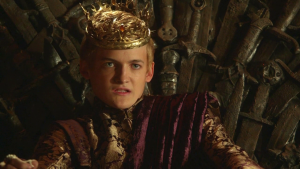For this weeks exploration, I decided to focus on the guest lecture from Liam Ward. Editing is the practice of “deliberately breaking things [in order to]… fill the gaps with meaning” (Ward, 2015).
The most famous breakthrough in the field of editing was through experiments by Lev Kuleshov, a Russian Filmmaker and theorist living in Moscow in the 1920’s. Through his experiments, the best known of which involved re-editing footage of “the expressionless face of actor Ivan Mozzhukhin… alternated with shots of a plate of soup, a young woman, and a little girl in a coffin.” People who took part in this experiment stated that they appreciated “Mozzhukhin’s ability to convey the emotions of hunger, desire, and grief respectively.” Despite the fact that he was expressing the exact same emotion each time:
Such experiments helped Kuleshov to develop his theory of the Kuleshov effect, “The proposition that the meaning of any given film will derive from the juxtaposition of individual shots as a result of the editing process… [and that] audiences understand the meaning of images differently depending on their sequential arrangement.” (Kuhn and Westwell, 2014).
One of the most effective editing techniques is match cutting. A match cut relies on something within one shot directly relating to something within the next shot, leading our brains to automatically create a link between the two. This is mainly done through matching shapes, colours, movement and even the overall composition of a shot. Basically, anything graphically. One of the most prolific and amazing uses of this technique is a Japanese animator by the name of Satoshi Kon, who I actually found out about from one of Aidan Tai Jones’ blog posts. This video essay by Tony Zhou shows just how prolific Kon’s use of this technique is, and how his use has changed the way many other director’s use match cuts and other editing techniques, as is seen through his influence on many other artist’s work:
Match cuts are unfortunately not used very often in mainstream films, but are however very prominent in experimental films and some particular directors, such as Edgar Wright, have adopted the match cut as a part of their signature style.
Another commonly used technique is elliptical editing. Elliptical editing is used throughout most films as it is very rare for a film to take place in ‘real time’. Elliptical editing is a technique used to shorten the length of sequences by removing unnecessary details to the overall story and plot development, such as when characters eat or use the bathroom, pick up objects out of frame and then put them on, or walk up a really tall mountain. By seeing pieces of these sequences our brains automatically piece together what has occurred, creating the important links needed in the narrative. This example from “Batman Begins” (Nolan, 2005) shows this technique:
One technique that often goes unnoticed but for some reason seems a bit strange to the human eye is rear projection, a technique commonly used for driving scenes due to the difficulty of filming subjects in a car from multiple angles while the car is in motion, mainly used in low-budget film-making, TV shows and films throughout the 20’s through to the 60’s. Rear projection works by placing your subjects in front of a screen, which you then project previously recorded footage onto, to give the illusion of motion. Add sound effects and it almost seems realistic. However some silent films in the 1920’s used this technique for different purposes, to create entire worlds of delusion and daydream for their characters, such as in “Sunrise: A Song of Two Humans” (Murnau, 1927):
From 2:29-3:11, Murnau uses rear projection to give us the idea that the Man and the Wife are so enamored with each other that they are separate from reality and so walk into their own. Also, because rear projection is used, it adds to the idea that their environment is disconnected from them somehow as it moves in a different way to the couple.
These are only three techniques that are commonly used in the practice of editing, there are many more to describe and many more, I’m sure, left to discover.
– Ward, Liam. Lectorial Guest Lecture on Editing-24/3/2015
– Kuhn, Annette and Guy Westwell. “A Dictionary of Film Studies.” Entry: “Kuleshov Effect.” Oxford University Press, 2014


